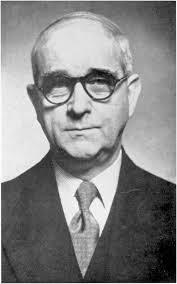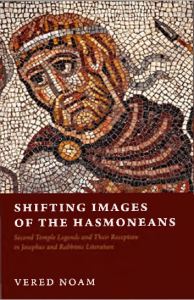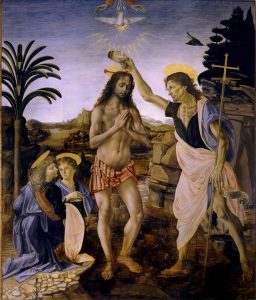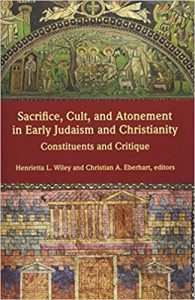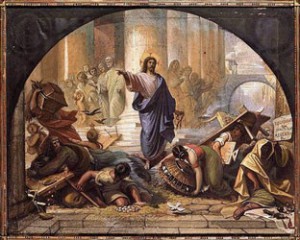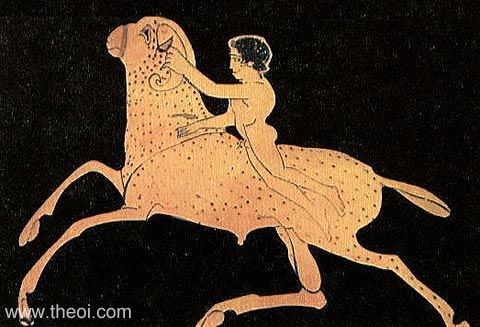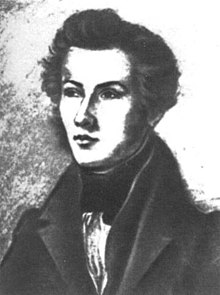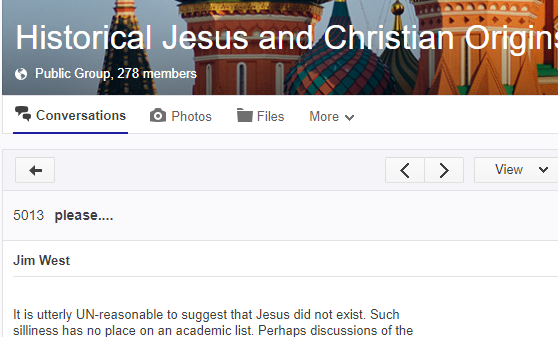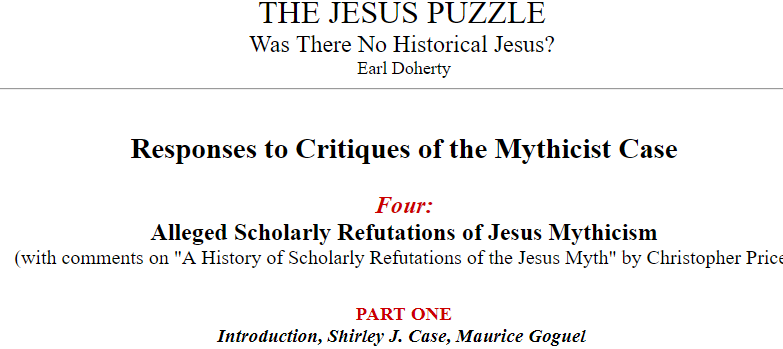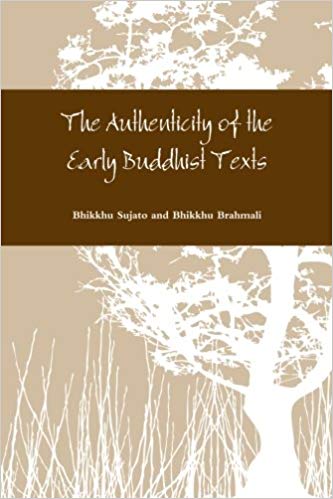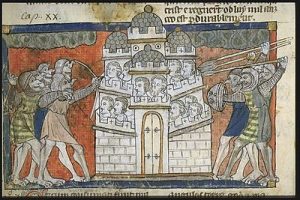
This post follows on from A Suffering Messiah Before Christianity? — the other side of the question. This series sets out the leading arguments (per Morna Hooker and H. H. Rowley) against the claims of some scholars that there existed among pre-Christian Jews a belief that a messiah was to suffer and/or die. So if you liked what you read last month about the pre-Christian ideas of a suffering messiah, take a breather and see if you change your mind after reading the following.
—
Common attributes of Servant of the Lord and Davidic Messiah
Rowley challenges the significance of one scholar’s table setting out a list of attributes shared by the Suffering Servant of Isaiah and the Davidic Messiah. Before we look at Rowley’s contrary arguments here is the list he cites. It is from an appendix in T. W. Manson’s The Servant-Messiah:
| SERVANT OF THE LORD (A) AND DAVIDIC MESSIAH (B) | |
| A | B |
| Isa. xlii. 1. “Behold my Servant.” | Ezek. xxxiv. 23 f. “My Servant David”; Zech. iii. 8. “I will bring forth my Servant, the Branch.” |
| Isa. xlii. 1. “I have put my Spirit upon him.” | Isa. xi. 2. “The Spirit of the Lord will rest upon him. the Spirit of wisdom, etc.” |
| Isa. xlii. 3. “He shall bring forth judgement.” | Isa. ix. 7. “Of the increase of his government… there shall be no end upon the throne of David… to uphold it with judgement”. Jer. xxiii. 5. “I will raise unto David a righteous Branch, and he. shall reign as king … and shall execute judgement.” |
| Isa. xlii. 6. “I the Lord … will give thee for a covenant of the people.” | Ps. Lxxxix. 3. “I have made a covenant with my Chosen … sworn unto David my Servant.” Ezek. xxxiv. 23 f. “I will set up … my Sen-ant David … and I will make with them a covenant of peace.” Cf. xxxvii. 24. 26. |
| Isa. xlii. 6. “for a light of the Gentiles.” Cf. xlix. 6. | Isa. ix. 1-2. “No gloom to her that was in anguish… A great light….” |
| Isa. xlii. 7. “to bring out the prisoners.” | Ezek. xxxiv. 27 (a Davidic passage). “When I have broken the bars and delivered them, etc.” |
| Isa. xlix. 1. “The Lord hath called me from the womb.” | Isa. vii. 14 f. and ix. 6. “Unto us a Child is born.” |
| Isa. xlix. 2. “He hath made my mouth like a sharp sword.” | Isa. xi. 4. “He shall smite the earth with the rod of his mouth.” |
| Isa. xlix. 6. “to raise up the tribes of Jacob, and to restore the tribes of Israel.” | Jer. xxiii. 8 (.A. Davidic passage). “As the Lord liveth which brought up … the seed of the house of Israel… from all the countries whither I had driven them.” |
| Isa. xlix. 7. “Him whom man despiseth…. whom the nation abhorreth” | Ps. Lxxxix. 50 (The Anointed, God’s Chosen, speaks). “Remember. Lord … how I do bear in my bosom (the reproach of) all the might}· peoples; wherewith thine enemies have reproached. 0 Lord, wherewith they have reproached the footsteps of thine Anointed.” |
| Isa. xlix. 7. “Kings shall see and arise; princes, and they shall worship.” Cf. lii. 15. “Kings shall shut their mouths at him.” | Ps. Lxxxlx. 27. “I will also make him the highest of the kings of the earth”; Lxxii. 10 f., “All kings shall fall down before him”; ii. 10. “Now. therefore, be wise. 0 ye kings…. Kiss the Son.” |
| Isa. lii.13 — liii.12. The sufferings and reproaches which fall on the Servant. | Ps. xviii. 4-6. cxxxii. 1. “David and all his afflictions”; Lxxxix. 38. “Thou hast cast off and abhorred. thou hast been wroth with thine Anointed”; Lxxxix. 41, “He is become a reproach to his neighbours.” |
| Isa. liii. 2. “He grew up as a tender plant and as a root out of a dry ground.” | Isa. xi. 1. “There shall come forth a shoot out of the stock of Jesse, and a branch out of his roots shall bear fruit.” Jer. xxiii.5. “I will raise unto David a righteous Branch.” |
| Isa. liii. 2. “He has no form … no beauty.” | Ps. lxxxix. 44. “Thou hast made his brightness to cease, etc.” |
| Isa. liii. 6. “All we like sheep have gone astray.” | Ezek. xxxiv. 22-24. Jer· xxni· 3-5. Israel, the scattered sheep of God, is to come under the rule of “David, my Servant.” |
| Isa. liii. 8. “As for his genera tion. who considered that he was cut off out of the land of the living?” | Ps. lxxxix. 45. “The days of his youth thou hast shortened…”; 47 f., “0 remember how short my time is.” |
| Isa. liii. 10. “He shall see his seed.” | II Sam. vii. 12-16. The promise to David’s house. Ps. lxxxix. 4. “Thy seed will I establish for ever”; 36 f.. “His seed shall endure for ever, etc.” |
| Isa. liii. 12. “Numbered with the transgressors.” | Ps. Lxxxix. 50. Quoted above in the parallel to Isa. xlix. 7. |
Rowley acknowledges that there are many points in common but denies that we have here evidence that anyone before the emergence of Christianity went so far as to think that the Suffering Servant was to be identified with the Davidic Messiah. Other biblical figures likewise share some of those attributes: e.g. Moses, Caleb, David, Job, Isaiah, Nebuchadrezzar, Zerubbabel are all designated “Servants of God”; Bezalel, Balaam, Joshua, Gideon, Jephthah, Samson, Saul, David are all said to have the Spirit of God; both Israel and Jeremiah were “called from the womb”; Jeremiah, Job, and many Psalmists are known to have suffered — yet none of these others are confused with the Messiah.
All that the evidence collected by Manson establishes is that it was not without reason that the concepts were brought together in the New Testament, and not that they had been already brought together before the time of our Lord. (p. 68)
Continue reading “Questioning the Claim of a Pre-Christian Suffering Messiah”

